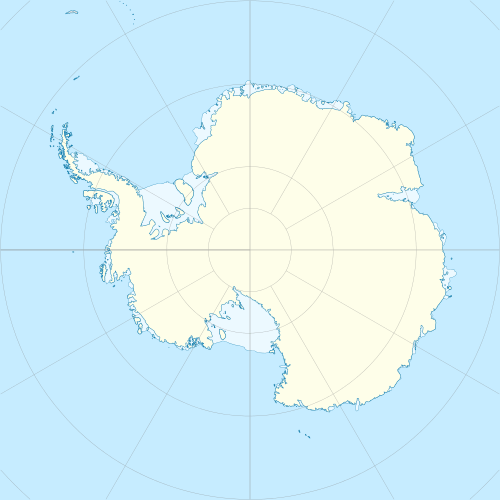Signy Island
 Signy Island base and panorama | |
 Signy Island | |
| Geography | |
|---|---|
| Location | Southern Atlantic Ocean |
| Coordinates | 60°43′S 45°36′W / 60.717°S 45.600°W |
| Archipelago | South Orkney Islands |
| Total islands | 1 |
| Area | 19 km2 (7.3 sq mi) |
| Length | 6.5 km (4.04 mi) |
| Width | 5 km (3.1 mi) |
| Administration | |
Largest settlement |
Signy Research Station (population 5) |
| Demographics | |
| Population | 5 |
| Pop. density | 0.26 /km2 (0.67 /sq mi) |
| Additional information | |
| Administered under the Antarctic Treaty System | |

Signy Island is a small subantarctic island in the South Orkney Islands of Antarctica. It was named by the Norwegian whaler Petter Sørlle after his wife Signy Therese.
Description
The island is about 6.5 km (4.0 mi) long and 5 km (3.1 mi) wide and rises to 288 m (945 ft) above sea level. Much of it is permanently covered with ice. The average temperature range is 0 °C (32 °F) to about −10 °C (14 °F) in winter (i.e. in July). The extremes extend to 12 and −44 °C (53.6 and −47.2 °F).
Signy Research Station
The British Antarctic Survey maintains the Signy Research Station, a scientific station for research in biology. The base was opened on 18 March 1947, on the site of an earlier whaling station that had existed there in the 1920s. The station was staffed year-round until 1996; since that year it has been occupied only from November to April. It houses 10 people.[1]
Important Bird Area
The island has been identified as an Important Bird Area (IBA) by BirdLife International because it supports substantial and varied seabird breeding colonies. Birds for which the site is of conservation significance are southern giant petrels (2300 pairs), Wilson's storm petrels (200,000 pairs), imperial shags (800 pairs) and brown skuas (100 pairs). Other birds nesting on the island include chinstrap penguins (19,500 pairs), Adélie penguin (16,900 pairs), gentoo penguins (750 pairs), Antarctic prions (50,000 pairs), south polar skuas, snow petrels, Cape petrels, black-bellied storm petrels, snowy sheathbills, kelp gulls and Antarctic terns. Antarctic fur seals haul out in large numbers varying up to over 20,000. Weddell seals breed in winter on the sea ice around the island.[2]
See also
References
- ↑ "Who We Are" (Web). Natural Environment Research Council. Retrieved 2007-11-11.
- ↑ "Signy Island". BirdLife data zone: Important Bird Areas. BirdLife International. 2013. Retrieved 2013-01-18.
External links
| Wikimedia Commons has media related to Signy Island. |
Coordinates: 60°43′01″S 45°36′00″W / 60.717°S 45.600°W